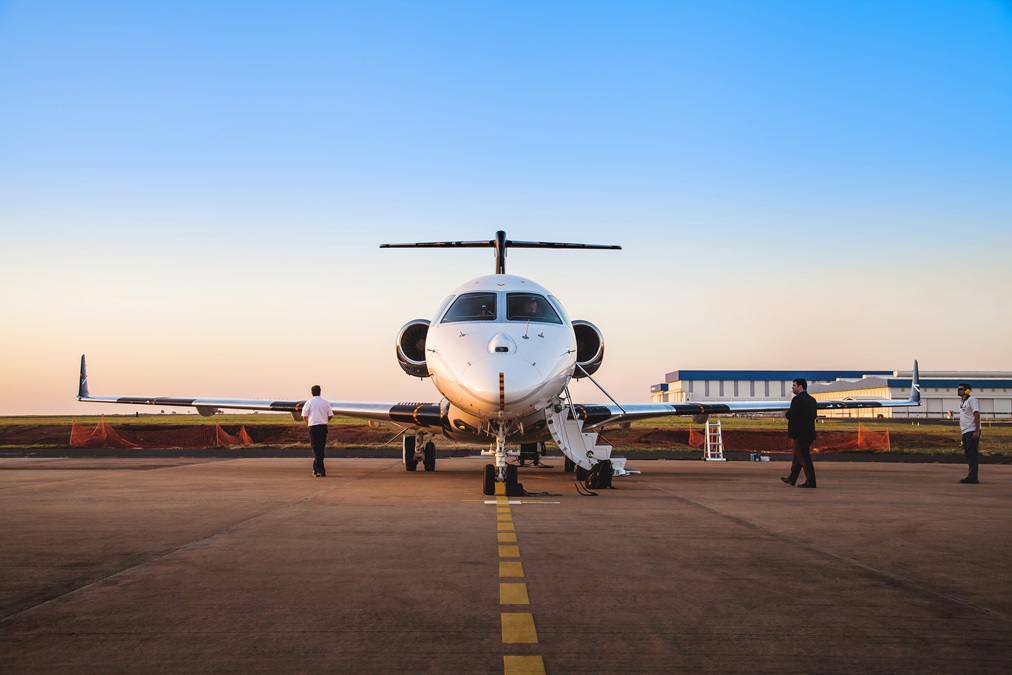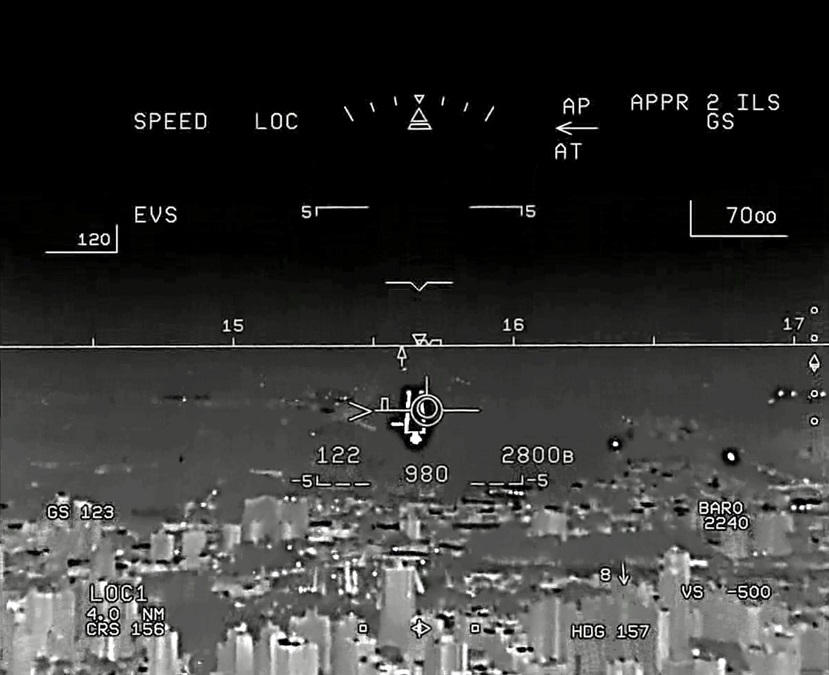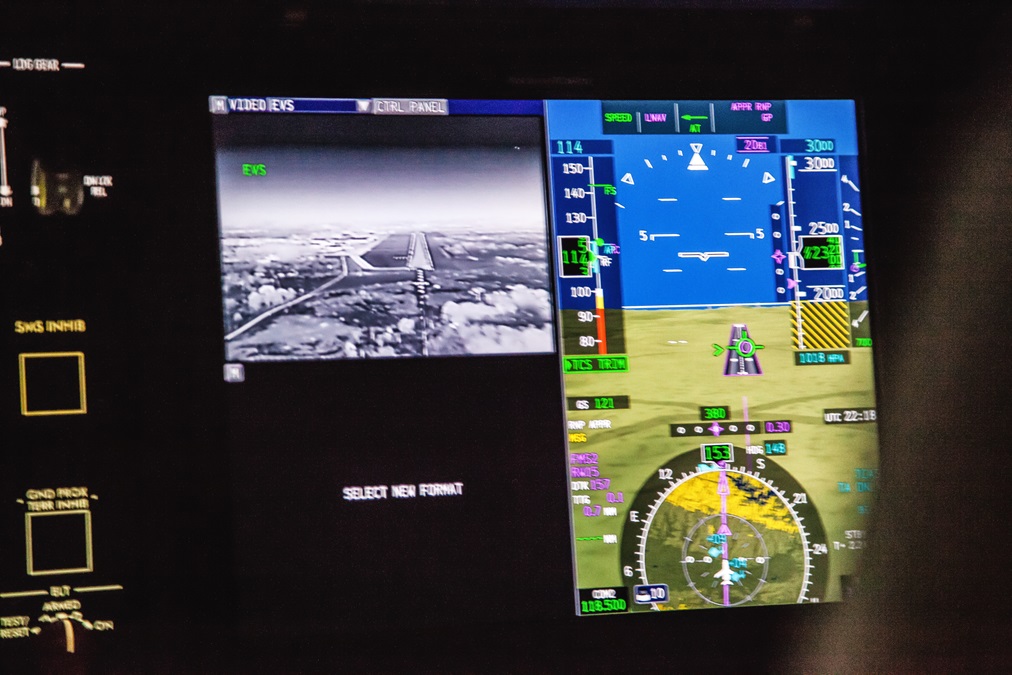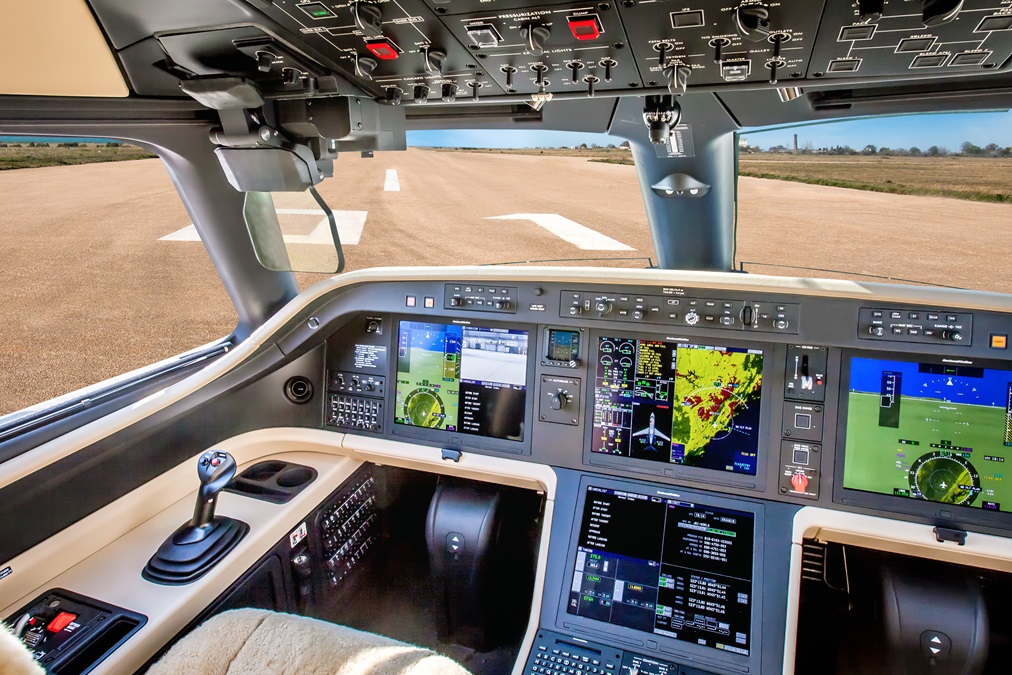Heads up
Seeing down final, no matter the weather
The certification of this new head-up display system is further evidence—beyond its commitment to fly-by-wire flight controls—of Embraer’s aggressive pursuit of advanced safety technologies. In fact, Embraer is the launch customer for the HGS-3500 and EVS-3000. I visited Embraer’s main campus at São José dos Campos, Brazil’s Professor Urbano Ernesto Stumpf International Airport (SBSJ) to learn more about these systems and, of course, fly them.
Why HUD?
HUDs have been around for quite some time. They’ve been used for targeting applications in military aircraft, as well as in airliners and some of the large-cabin business jets built by Bombardier, Dassault, and Gulfstream. Where HUD and EVS earn their keep is during low-visibility, straight-in, precision instrument approaches. The EVS’s infrared sensor(s) detect thermal energy emitted by heat sources such as runways, runway lights, other elements of the runway environment, and terrain. This energy is then converted into signals that are combined into a HUD presentation that’s displayed on a flip-down glass plate—the pilot display unit (PDU), or combiner—located directly in the pilot’s forward view.
The advantages are immense. At night, the pilot sees essentially a daytime view through the PDU. Runways that ordinarily would be obscured by clouds, dense fog, or precipitation are plain to see using EVS, even at night. Meanwhile, HUD symbology presenting airspeed, altitude, attitude, heading, flight path, energy management cues, and much more is superimposed on the PDU/combiner, and both outside view and HUD symbology remain in focus. The result? Safer approaches in low-visibility situations, obviously. And vastly improved situational awareness and more precise approach monitoring as the airplane approaches the runway, whatever the weather.
A study conducted by the Flight Safety Foundation in 2009 determined that 38 percent of all accidents involving turbine-powered, modern glass-cockpit aircraft could have been avoided had pilots been using a HUD. Some 69 percent of landing and takeoff accidents, and 57 percent of loss-of-control accidents, could have been prevented. Merge today’s improved EVS technology with a HUD presentation (an array officially dubbed EFVS, for “enhanced flight vision system”) and the benefits must certainly be greater now—so much so that the FAA allows credit for descents to lower-than-standard landing minimums.
The Legacy 450/500 installation
By no stretch of the imagination is the 450 or 500 a small airplane. But their cockpit volumes are smaller than those of, say, a top-of-the-line Gulfstream or Falcon. Traditional HUD setups in those airplanes use an overhead projector that beams imagery to their combiners. The projector is bulky and heavy. Put one of them in a Legacy 450/500 and the pilot would bang his or her head into it.
At night, the pilot sees essentially a daytime view through the PDU. Runways that ordinarily would be obscured by clouds, dense fog, or precipitation are plain to see using EVS, even at night.That’s why Rockwell Collins went for a compact PDU and combiner design in the HGS-3500. Instead of a projector, this system uses a slim optical waveguide to bend the signals from the three separate nose-mounted sensors to the combiner. Those three sensors detect three different segments of the infrared spectrum. Together, they give a visual resolution equal to that of a projector-style system—without the latter’s size, weight, and power draw.
One sensor camera sees the shortwave infrared spectrum, which includes heat of the type generated by incandescent and halogen light sources. A long-wave infrared sensor sees heat emissions from terrain, animals, people, paint stripes, and runways. The third camera scans the visible spectrum, which is vital. That’s because light-emitting diodes (LED) emit a cool light, undetectable in the other spectrums, and more and more incandescent runway lights are being replaced by LEDs. The EVS-3000’s imager processing and fusion algorithms automatically merge all three of these image sources on the combiner, giving the pilot an exceptionally clear view ahead.
In flight sights
Rodrigues and I climbed into the cockpit of PT-VEY—Legacy 500 serial number two, the second flight test aircraft—and the HUD junkie got me ready for a demonstration flight around São José dos Campos. Press two buttons and the combiner swings out of its stowed position. Correct head position is critical if you’re to see the HUD imagery, and this means getting your eyes about six inches from the combiner’s glass plate.
Rodrigues powered up the ship and within five seconds I could see the HUD’s pitch ladder, airspeed and altitudes tapes, and other symbols. It took some tweaking of the seat position and combiner angle, and there it was: the ramp ahead, clearly visible even though we were almost at sunset. There’s some parallax when viewing close-in objects, so the taxiway stripes don’t line up with your natural vision’s perception. That’s because the sensors on the nose are below and to the right of your eyes. This discrepancy disappears with distance.
Rodrigues programmed the Rockwell Collins Pro Line Fusion avionics suite for our fight, which would take us to the north, toward high terrain. We had marginal VFR conditions, with scattered to broken lower cloud layers. But the mountains were completely obscured by clouds. I’ve flown the Legacy 450 and 500 before, but I have a confession: I’d never flown a HUD in my life. Now there I was, about to take off using HUD cues alone.
ATC said “line up and take off,” so I swung the airplane to Runway 15’s centerline and Rodrigues and I reviewed the takeoff. Although the EVS was turned on, it was too light to see its cues. No matter. I could see the runway environment through the combiner, together with the HUD symbology. It was an autothrottle takeoff, which means you advance the thrust levers until they’re “standing up” (vertical), at which point the system automatically advances the levers to the takeoff position.
It wasn’t long before we were hurtling down the runway toward our V1 of 121 knots. Then it was rotate, pitch up to 20 degrees using the HUD pitch ladder, and climb out at 180 knots in a climbing left turn to 8,000 feet.
In no time we were closing in on the mountains. With the HGS-3500 you have a choice of views from either the EVS sensors or SVS imagery from the Fusion’s database. Using the center pedestal display push-buttons and trackball, you can call up a drop-down menu on the PFDs to select either EVS or SVS. We picked SVS.
And there they were: the mountains, dead ahead in the HUD’s greenish glow, complete with detailed topographic features. A peek at the top and around the sides of the combiner showed that the mountains were covered in dense cloud, but the SVS made them seem plain as day. Which was fast fading, by the way.
For our RNAV and ILS approaches we selected EVS on the drop-down menu. You could see the cold cloud tops highlighted on the combiner imagery. Once we descended below the cloud bases, the EVS clearly showed the heat signatures of the buildings along Runway 15’s final approach course, the sequenced flashing lights, the runway lights, and the still-warm runway surface. At the 200-foot decision height on the first ILS approach, I powered up and did a go-around, pitching up into the night sky.
One approach was an ILS to Runway 15, but with a twist. This time I’d descend—again, using the HUD with EVS imagery—to a decision height of 100 feet. This is the lowest decision height currently approved when using the Legacy’s HUD/EVS view. Approaches using HUDs showing SVS are not approved for approaches, descents to minimums, or landings—the reasoning being, rightly, that SVS does not show a true, conformal view of the terrain or runway environment. The EVS-3000 gives a faithful rendition.
After we were vectored onto final, it was easy to monitor our progress using the HUD flight path symbology—even when hand-flying in approach mode. Just put the circular flight director cue inside the flight path marker (which is positioned right over the runway touchdown point) using the sidestick control. Because the Legacy 450 and 500 use fly-by-wire technology, this is a matter of steering the airplane so that the cue is inside the marker, then releasing the controls. The airplane will maintain the attitude you’ve selected. Set and forget, you might say. Of course, wind effects mean you might have to make corrections, but your workload is still lessened because you’re not having to constantly jockey the controls. Of course, flying an approach using the Fusion autopilot is a breeze.
As the landing gear are extended, the HUD presentation automatically goes from a full format to a declutter mode that limits combiner view, making the flight path marker the primary focus; gone are the altitude and airspeed tapes, replaced by textual numerical callouts. You can also manually declutter the display at any time by pressing on an EVS Clear button on the sidestick.
As is standard procedure, Rodrigues had been monitoring the situation the entire time on a pane of his PFD that shows the same EVS imagery I see on the HUD. He called out “minimums” as we passed through the 200-foot DH, and I continued to descend using EVS on the HUD. At the 100-foot DH he called out “100 feet,” and the next call is mine. Either I see the runway ahead visually—without depending on EVS guidance—and say “landing,” or if I can’t see the runway, it’s a “go-around” call. We did a go-around, even though weather was not a factor.
Since conditions were good VFR, for the final ILS I flew the airplane past the 100-foot DH all the way to touchdown using HUD and visual cues. The same callouts were used, and here’s how it went:
VREF airspeed was 135 knots using a flaps 3 setting. Autobrake was set to Low. At the 200-foot DH I disengaged the autopilot and hand-flew the flight path marker. At 30 feet agl, the autothrottles went to idle. At Rodrigues’ urging I pitched up one degree and held that attitude. The vertical deceleration cue bars on the flight path marker rose slightly—the “wings of the angels,” Rodrigues calls them—a good sign indicating a smooth deceleration in the flare.
Touchdown was very nice, thanks to the trailing-link main gear. But I blew it by floating too much and then applying the brakes—which disengaged the autobrake function. Still, it was a great 1.7 hours of flying—all of it using the HUD. I may not be a HUD junkie quite yet, but at least I’m no longer a HUD virgin.
Thanks to some new regulations, the future of HUD/EFVS operations is promising. FAR 91.176, issued in December 2016, not only authorizes properly trained crews to fly straight-in approaches using EFVS to the 100-foot minimums we demonstrated, but in March 2018 EFVS should be authorized for departure—and on landing, all the way to touchdown and rollout.
Given that, Embraer’s timing seems prescient. So does its choice of a simpler and smaller HUD PDU and combiner, which demonstrates their suitability for other mid-size business jets. Embraer has prewired all its Legacy 450s and 500s to accept the HGS-3500 and EVS-3000 as a retrofit. Will this pay off? So far, 12 Legacy 450s and 500s have been ordered with the system.
Email [email protected]
Photography courtesy of Embraer and Rockwell Collins.








